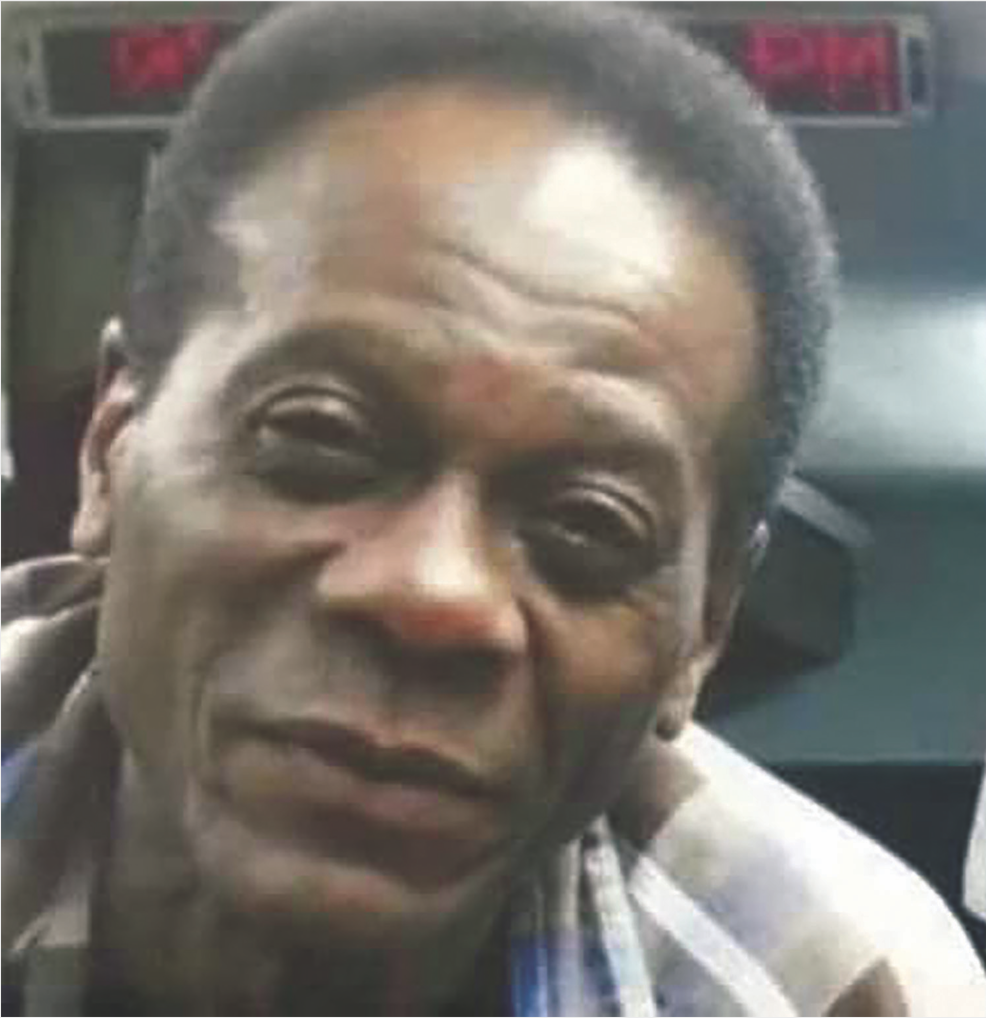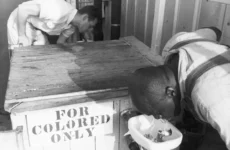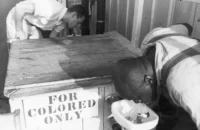Please click the link below to subscribe to a FREE PDF version of each print edition of the Niagara Reporter
http://eepurl.com/dnsYM9

Jesse Richardson, photographed above, made a mark in the Niagara Falls community. Police recently ruled his death a homicide.
By: Ken Hamilton
As anyone who is interested in knowing, now knows that the Niagara Falls Police Department has ruled the bedside death of Highland restaurateur Jesse Richardson as a homicide. In so doing, the detective’s conclusion confounds them into a greater quandary than normal.
Normally, people in inner-city neighborhoods, like Highland, don’t necessarily expect the police to find the people who murder black people. The irony of it is that when they do, the perpetrator is black as well. So are the silent witnesses who could have helped the police find and put away the person sooner.
Back in 1984 during Jesse Jackson’s run for the presidency, the Chicagoan spoke on such matters. Back then, I was his Niagara County’s campaign’s communications person, so I listened to and absorbed most of what he said.
Jackson said that black-on-black crime is higher than white on black crime, and then went on to alliterate the myriad iterations of intra-group crimes: white-on-white, brown-on-brown, yellow-on-yellow and red-on-red, how each exceeds the incidents of one race killing one of another race. He said that the reason for it is that, “We always hurt the ones closest to us.”
That closeness to the “us” of any group would also include witnesses and second hand whisperers of information about potential suspects as well. It is to the police liaisons who live in those areas to keep their ears to the ground.
But it is also much to be expected that a witness who is a part of a group that was herded into a neighborhood because of skin color and/or economic status would openly come forward – much as once were the Polish, Irish, Italians, Puerto Ricans, Dominicans, Koreans, and others, as to a large degree are blacks; even when the person slain is a pillar to the community.
Even the term “community” precludes it from readily happening, as “community” connote a common way of thinking, and culturally that is silence; whereas the word “neighborhood” describes a warmer closeness by proximity.
In the years prior to the 1940s, blacks, as writer and former city administrator Bill Bradberry had often noted, were fully integrated in what could properly be called Professor H. William Feder’s thesis The Evolution of an Ethnic Neighborhood that Became United in Diversity: The East Side, Niagara Falls, New York 1880-1930. When you flock such groups into such pens, one should expect the silence of the lambs.
Today, even after the some 70 and more years since black folks were redlined out of Feder’s ethnically-diverse neighborhood, the sons and daughters of those who once lived there thought it a good idea to tear down the old buildings in the areas where they were forced into and to build new ones in the same place, changing neither the minds, nor the location, nor the lot in life of those who are therein trapped; perhaps trapped to be the next victim.
Some years ago, a local barber called me at home and asked why the police have solved all of the white homicides but not all of the black ones. I told him that I didn’t know if that was true, but I will investigate.
Before hanging up the phone I told the barber that black people seem to cloister ourselves in our community and don’t talk to whites too much about such things. As a result, we know all of the black homicides but know little of the white ones.
Upon investigation I found that most black homicides were solved, and not all of the white ones were; but a higher ratio of white homicides were solved because whites are more willing to cooperate with the police than blacks.
Despite the detectives finding that Richardson’s death was a homicide, rather than a suicide as some supposed, the police are indeed in a quandary. Had they ruled it a suicide, then some would believe that the police just didn’t want to solve the crime and chose to write it off as such. But as the former police chief told me when I investigated the barber’s concerns, “Police like solving all crimes.” And with it being a homicide, I am sure that there will be those who will also have doubts about the police’s determination to find the killer anyway.
Let’s not turn our safety into the police’s and our own quandary. As a “community”, we must be more neighborly determined than even the police to find the perpetrator, and to do so by working with the police so that they can do so – before the next lamb is forever silenced.
We all just have to know that one of those silent lambs is most likely sleeping with the wolf.





















